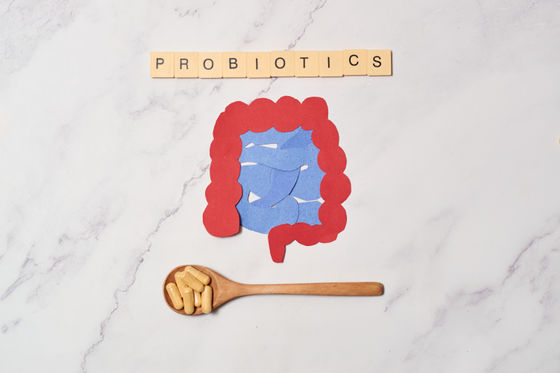A ``probiotics delivery system'' will be developed that will dramatically reduce bad bacteria while exploding good bacteria in the intestine

A team of researchers from Zhengzhou University in China has developed an orally ingestible probiotic-containing gel that eliminates harmful bad bacteria while protecting good bacteria that help improve and maintain the intestinal environment for a long time. Did. The gel is expected to help treat
Calcium Tungstate Microgel Enhances the Delivery and Colonization of Probiotics during Colitis via Intestinal Ecological Niche Occupancy | ACS Central Science
https://doi.org/10.1021/acscentsci.3c00227
Crohn's and probiotics: Scientists find way to kill bad gut bacteria, not the good
https://www.medicalnewstoday.com/articles/crohns-and-probiotics-scientists-find-way-to-kill-bad-gut-bacteria-not-the-good
Helping 'good' gut bacteria and clearing out the 'bad' -- all in one treatment -- ScienceDaily
https://www.sciencedaily.com/releases/2023/06/230621105419.htm
In a paper published in the peer-reviewed scientific journal ACS Central Science dated June 21, 2023, a research team led by Jiali Yang of Zhengzhou University protects good bacteria from digestive juices such as gastric acid while inhabiting the large intestine. announced 'Calcium Tungsten Microgel (CTM)' that suppresses harmful bacteria.
This CTM consists of nanoparticles containing sodium alginate, tungsten, and calcium placed in gel granules and coated with probiotic bacteria. When CTM is taken orally, the gel protects the probiotic bacteria from stomach acid while delivering them to the large intestine where they remain there longer.

Then, when proteins and calcium, which are commonly found in the intestines of patients with inflammatory bowel disease, combine to break down the granules, tungsten is released from within, activating enzymes necessary for the growth of harmful intestinal bacteria. impede On the other hand, probiotic bacteria do not require the enzyme, so only useful bacteria can grow in the large intestine.
This CTM is expected to be effective in treating colitis, especially inflammatory bowel diseases such as
Inflammatory bowel disease is a chronic disease of the digestive tract that is estimated to affect 3 million people in the United States alone. Although the mechanism of its occurrence has not yet been fully elucidated, the results of previous research suggest that harmful bacteria proliferate excessively when the balance of intestinal bacteria is disrupted, impairing the barrier function of the intestinal tract and normal immune function. One of the reasons is thought to be that it interferes with its functioning. For this reason, immunosuppressants have been used to treat inflammatory bowel disease, but these drugs have the problem of being expensive and accompanied by harmful side effects.
Probiotics are also attracting attention as a promising treatment method, but since the bacteria are killed by digestive juices such as gastric acid, it has been difficult to deliver good bacteria to the necessary parts of the intestine. bottom. In particular, in inflammatory bowel disease, harmful E. coli overgrows, so even if good bacteria were sent, they could not be established.

When the research team administered CTM to mice artificially induced with inflammatory bowel disease for five days, harmful intestinal bacteria decreased 45-fold, while colonies of probiotic bacteria increased 25-fold. increased to The intestines of CTM-fed mice also did not show many of the problems that are indicative of inflammatory bowel disease, such as intestinal barrier damage and colonic atrophy.
Based on these results, the research team concludes, 'CTM is an amazing treatment for colitis, such as improving colon atrophy, effectively suppressing inflammatory responses, restoring damaged mucosal barriers, and restoring homeostasis of the intestinal flora.' It is possible,' he wrote in the paper.
Related Posts:
in Science, Posted by log1l_ks







